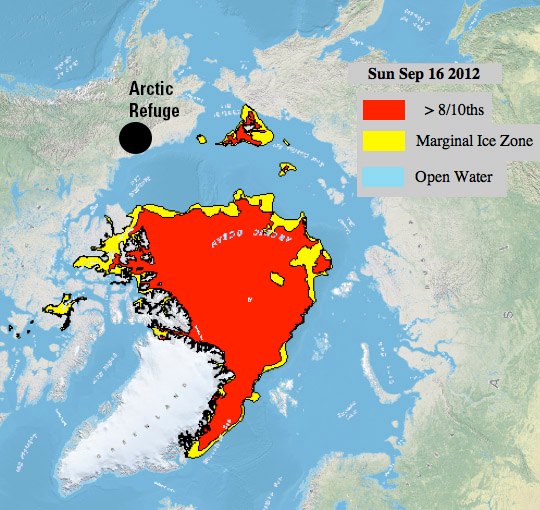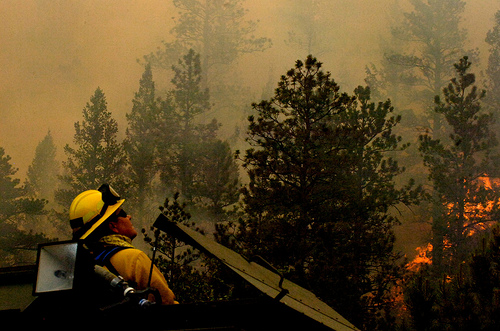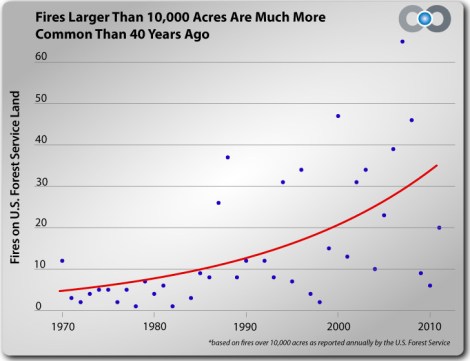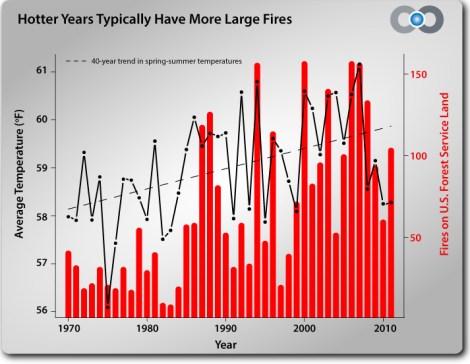Climate Central points out what should already be obvious: As it’s getting hotter, we’re seeing more wildfires — and the wildfires are getting bigger.
Even as the 2012 wildfire season continues — there are nearly 1 million acres actively burning right now — the site parsed the data to pick out long-term trends linking fires, size, and heat. Here are some of the key findings from its report.
We’re seeing more big fires.
Climate Central compared recent and historical data.
Compared to the average year in the 1970’s, in the past decade there were:
- 7 times more fires greater than 10,000 acres each year
- Nearly 5 times more fires larger than 25,000 acres each year
- Twice as many fires over 1,000 acres each year, with an average of more than 100 per year from 2002 through 2011, compared with less than 50 during the 1970’s
There’s a relationship between temperature and the number of fires.
Temperature trends and the number of fires are both on the increase.
The National Research Council reports that for every degree Celsius (1.8°F) of temperature increase, the size of the area burned in the Western U.S. could quadruple. According to the IPCC 4th Assessment Report, summer temperatures in western North America could increase between 3.6°F and 9°F by the middle of this century.
In the West, which by 2050 could be in a state of permanent drought, the link between temperature and fires is already clear. (Which, to be fair, we already knew.)
[W]hat defines a “typical” wildfire year in the West is changing. In the past 40 years, rising spring and summer temperatures, along with shrinking winter snowpack, have increased the risk of wildfires in most parts of the West. …
Rising spring and summer temperatures across the West appear to be correlated to the increasing size and numbers of wildfires. Spring and summer temperatures have increased more rapidly across this region than the rest of the country, in recent decades.
What about this year?
Climate Central looked at 42 years of data, excluding data from a still-incomplete 2012 season. So let’s see how 2012 is stacking up.
In August, we noted that the country was on pace for the most acres burned in recent history. We’ve fallen off that pace somewhat — happily — though we’re still seeing a massive number of acres burned.
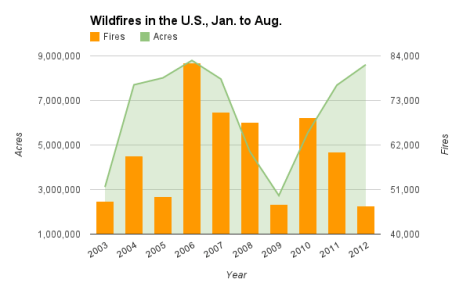
Click to embiggen. (Data courtesy of the National Interagency Fire Center.)
What’s remarkable, though, is how ferocious those fires are. Note how few fires there have been in 2012, yet we’re on track for the second most acres burned in a year. That’s because the number of acres per fire is spiking.
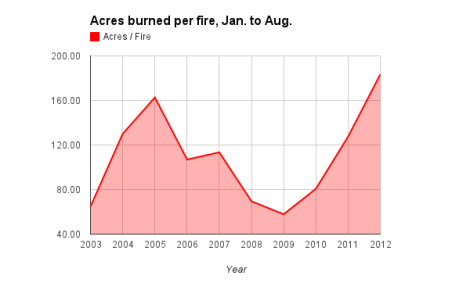
Click to embiggen. (Data courtesy of the National Interagency Fire Center.)
Why? It’s been hot and it’s been very, very dry.
And those are two trends that aren’t set to change any time soon.
